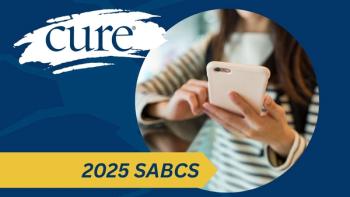
Targeted Therapy May Be the Future for Triple-Negative Breast Cancer, Expert Says
Linda T. Vahdat, M.D. discusses the findings of a recent phase 2 trial that may lead to the approval of a targeted therapy for triple-negative breast cancer.
According to Linda T. Vahdat, M.D., the results of a recent phase 2 trial may lead to the FDA approval of the first targeted therapy for patients with triple-negative breast cancer (TNBC).
The METRIC study is exploring the efficacy and safety of CDX-011 (glembatumumab vedotin) versus standard capecitabine in this subset of patients, particularly in those with high levels of glycoprotein NMB (gpNMB) expression (
What is CDX-011's mechanism of action, and how does it compare with other antibody-drug conjugates?
In an interview with CURE, Vahdat, a professor of Medicine, Breast Cancer Research Program Leader at Meyer Cancer Center, at Weill Cornell Medicine and New York-Presbyterian, explains the goals of the METRIC trial, sheds light on how CDX-011 distinguishes itself from other agents, and how METRIC’s results, if positive, could leave a lasting impression on the treatment paradigm of TNBC.For patients with TNBC, the only really available agents right now — from a standard perspective — is chemotherapy. That is it. The only advance that has been made is administering chemotherapy to these patients. Therefore, CDX-011 works very differently. It’s an antibody-drug conjugate; the antibody part of it targets gpNMB, also known as osteoactivin. gpNMB is important for invasion and migration, so it helps the cells move around. This is linked to a chemotherapy drug known as monomethyl auristatin that is an antimicrotubule agent; it’s actually a pretty old drug.
Anecdotally, how have you seen this drug tolerated in the patients who have enrolled thus far?
What does the future hold for CDX-011? Could we look at combining it with other agents?
What are the next steps following the METRIC trial?
However, the problem is they couldn’t give it in vein to people because it was too toxic. When they are able to target it just to the tumor cell, the toxicity profile is actually quite acceptable.It is typically a very well-tolerated drug. The biggest side effect is that patients can get a little bit of neutropenia, which is something we deal with all the time. A small proportion of patients may get a rash, because gpNMB is sometimes expressed on the skin. Another side effect is patients do lose their hair, which is the biggest problem. As we know, the patients — very reasonably — do not want to lose their hair. Generally speaking, it’s very well tolerated.It is hard to know what the future holds for CDX-011. There is one thing we know if it turns out that it is more effective than standard therapy. When we see a patient’s TNBC, in addition to reconfirming the ER-, PR- and HER2-negativity, we are going to be checking for gpNMB overexpression, so that is going to change in how we approach patients. That is a good question. I’m not quite sure what the next steps would be. After the METRIC trial, my hope is that we have an approval of the first targeted drug for TNBC.
One of the things that are just really important when someone is diagnosed with metastatic breast cancer is that you have options. When you look at the natural history of the disease in people who do not have TNBC—say they are HER2-positive or HR-positive, called luminal breast cancers—they have lots of options. You have this big bucket that you pull of all of these options out of.
What else should the community know about the METRIC trial?
When you have patients with TNBC, you only have one set of options—which is chemotherapy, so they’re really very limited. Having a drug such as CDX-011 would expand the options. The expectation would be that, if you expand the options with something that is targeted, you would have better disease control and a better quality of life.If you have TNBC and you really haven’t had too many therapies at all, it’s really good to speak to your healthcare provider to see whether or not you would be a candidate for this clinical trial. Then, contact us on Clinictrials.gov. We would be happy to see if you are a candidate or answer your questions, because it’s a great opportunity.





